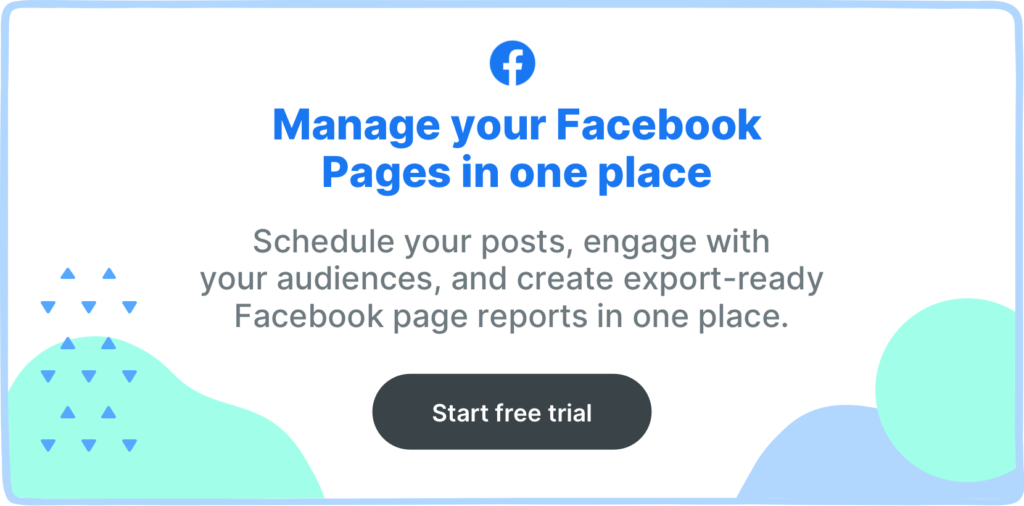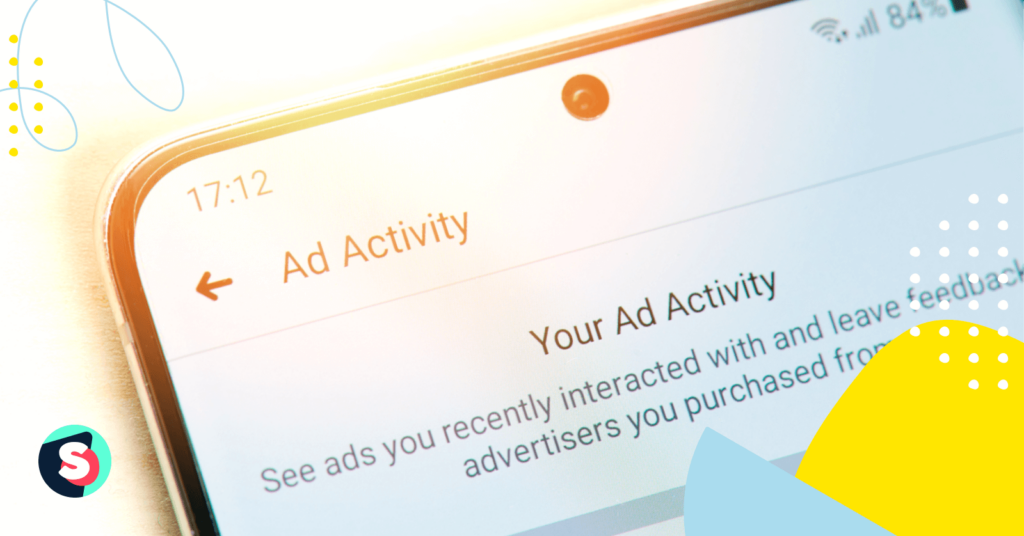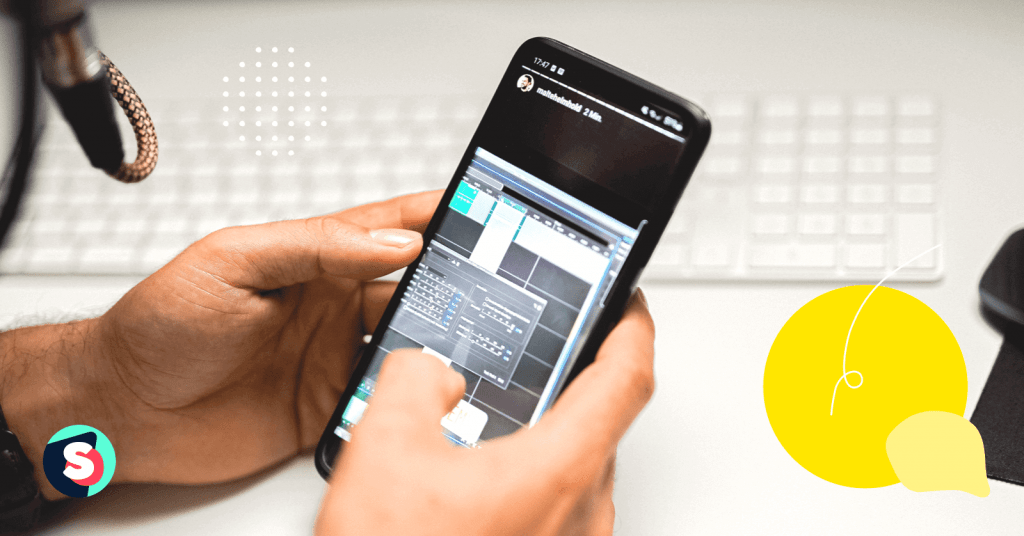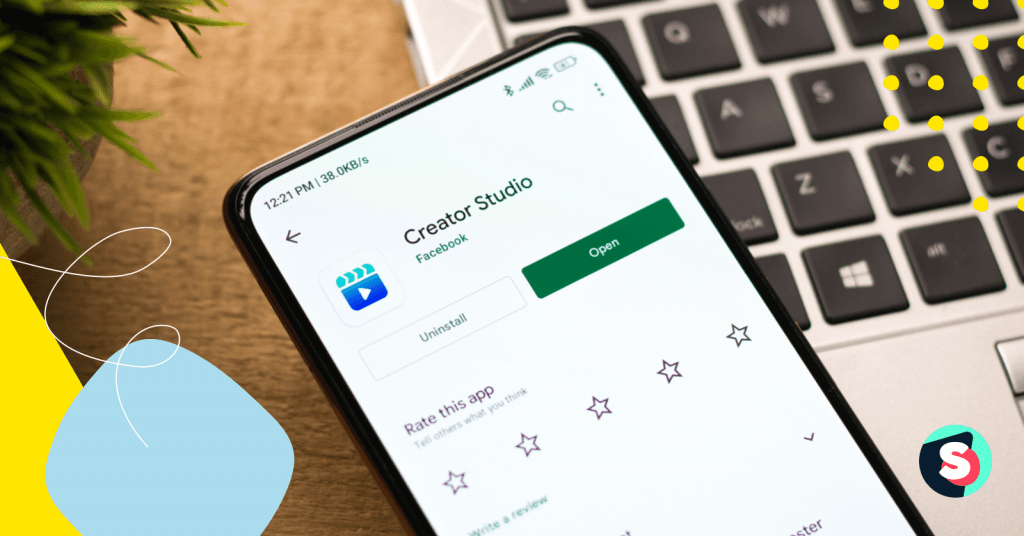Looking to get in front of your ideal customers?
Facebook ads can be one of the most cost-effective customer acquisition channels at your disposal. And that’s not just my opinion. This State of Marketing Report by Hubspot confirms it too.
It says Facebook provides the highest return on investment of all paid channels for the majority of companies.
But do you have that much confidence in your Facebook ads? If you don’t, read on.
In this article, we’ll explore how to optimize your Facebook ads so you improve your return on ad spend (ROAS). We’ll also look at popular Facebook terms and metrics so you don’t get lost in your analytics.
Facebook ads metrics and terms you should know about
Here are some Facebook ad terms you should be familiar with.
Cost-per-click (CPM)
Your CPM is the average cost of a link click. It’s calculated by dividing the total amount spent on ads by each link click. This metric serves as a benchmark for your ad efficiency.
Cost-per-mille (CPM)
This is the average cost of 1000 ad impressions. This metric can be used as a health check for your ad campaigns. For instance, a high CPM could mean that your targeting is too strict and you need to include new demographics.
Cost-per-engagement (CPE)
Your CPE shows how much you pay for each customer interaction with your ads. This metric is especially important if the objective of your ad campaign is awareness. It tells you if your audience resonates with the message you pass across.
Frequency
Frequency shows the average number of times someone sees your ad. If your frequency rises while your ad performance drops, it might mean your prospects are beginning to experience ad fatigue.
Placement
Your ad placement is the different places where your ads can be shown. These include positions on Facebook feed, Facebook stories, Facebook search results, Instagram feed, Instagram stories, Messenger, and so on.
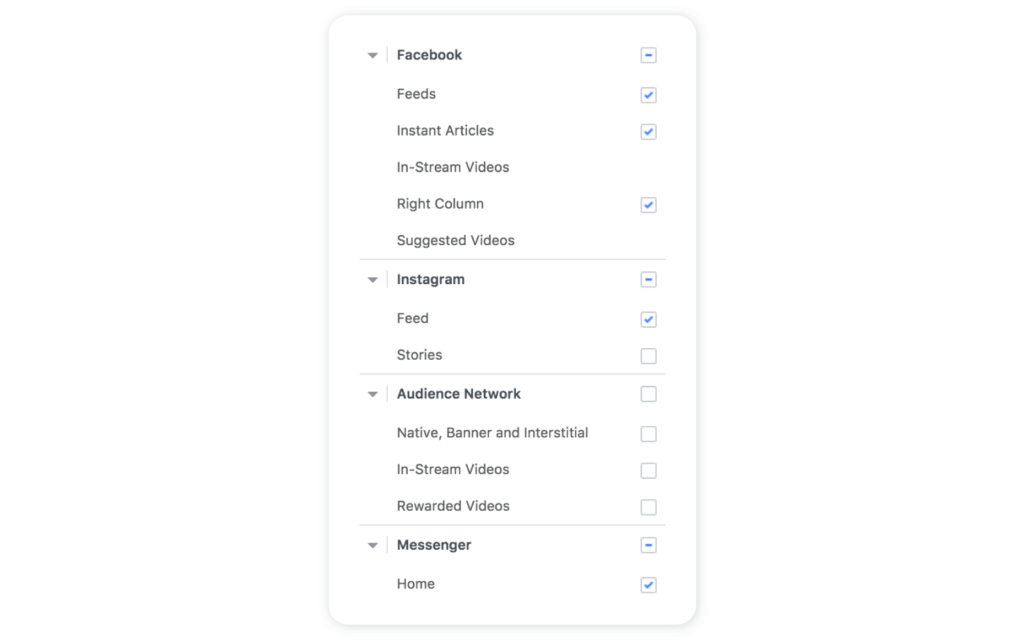
Factors that affect the cost of your Facebook ads
Webfx did a study and discovered that advertising on Facebook cost brands an average of $0.97 per click and $1.79 per impression.
While these numbers tell you how other marketers are doing, don’t take them as a north star metric for your brand’s Facebook advertising campaigns. You’d most likely end up paying something far greater or lesser than Webfx findings as your ad cost depends on a number of factors.
These factors include:
- Audience
- Relevance
- Bid strategy
- Industry
- Timing
- Ad placement
Let’s see how these factors affect your ad cost.
Audience
Online advertising has a general rule. The more popular your audience is, the more you pay to attract them.
Think deeply about the demographics you want to reach on Facebook. You won’t be competing with brands in your niche only. You’ll also have to fend off interest from brands that sell different products or services but target the same audience.
If you target the same audience as a lot of other advertisers, expect your Facebook ads cost to rise.
Relevance
Like every other social media platform, people prefer to see ads that are relevant to them. And when businesses show relevant ads, they see better business outcomes.
Facebook confirmed the importance of ad relevance to your ad ROI. In this blog post, it reiterates that relevant ads cost less and provide better results.
How do you figure out quickly if your ads are relevant to your target audience? Use Facebook’s ad relevance diagnostics to determine if you need to make adjustments to your ad campaigns.
Bid strategy
Your bid strategy controls how Facebook spends your ad budget.
There are different tactics available and we’ll look at them soon. But know that you can either decide to let Facebook handle your bidding for you or choose to do it yourself. Your choice will influence how much you spend on ads.
Industry
Like your audience, the industry your brand operates in also affects the cost of running ads on Facebook.
Here’s an example. According to these Facebook advertising benchmarks published by Wordstream in 2022, the average cost-per-click in the finance industry is $3.89. That number is $0.42 in the food and drink niche.
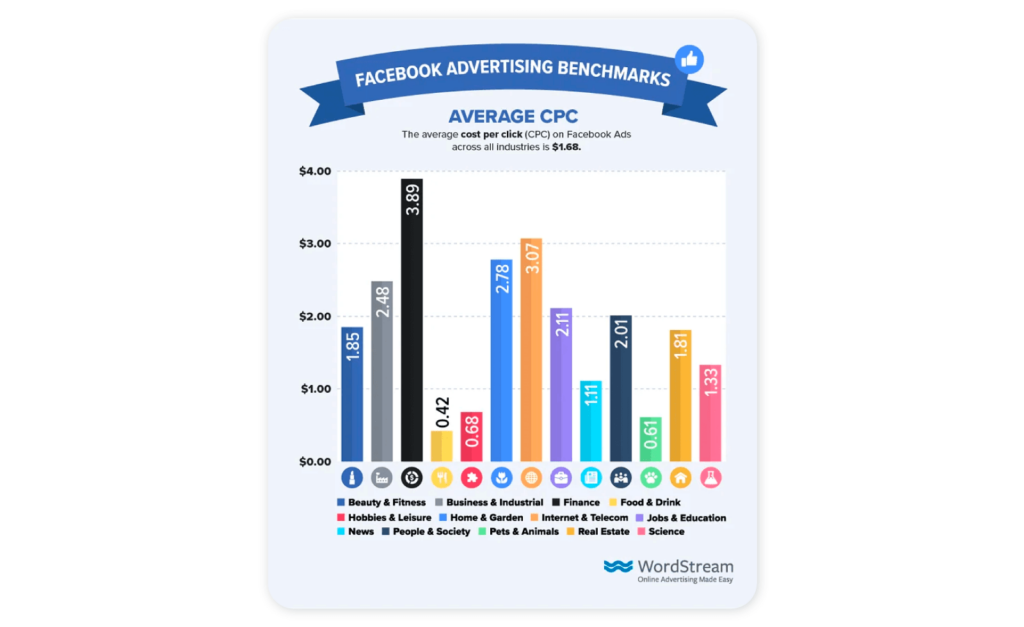
Timing
Your cost is also affected by when you run your campaign on Facebook. For instance, a gift store running ads during the holiday season should expect to spend more to reach new customers.
Ad placement
Ad placements are the different places Facebook can show your ads. These placements have varying costs. But generally, the more competitive the placement is, the higher the cost of showing your ad there.
5 tips to optimize cost per impression Facebook
These tips are universal when it comes to optimizing your Facebook ads cost.
- Choose the right audience
- Test different bid strategies
- Optimize your Facebook ad delivery
- Run your ads on a schedule
- Test new content
Let’s see how to take advantage of them.
Choose the right audience
This tip sounds obviously simple: choose the right audience and watch your ROI skyrocket.
But achieving this isn’t simple. Remember that:
- Niche audiences cost more to attract than general audiences.
- Your industry affects your Facebook ads cost.
- Your audience location also has to be considered. Do you want to reach people in North America or Asia?
In spite of these constraints, the first thing to do when choosing your audience is to be as precise with their demographics as possible. In other words, target a specific audience. Niche audience might cost more, but your conversion rates will be worth it.
Ben Cook, former Marketing Director of JC Social Media – a social media agency, emphasizes why this is important. In his words:
“By narrowing your target audience, you can drastically reduce the competition from other brands running ads to a similar audience… It means you can tailor ads to appeal to specific demographics, geographical area, and set of interests, giving you the best chance of gaining clicks and generating traction.”
Another way to ensure you show your ads to people most like to buy your product is to retarget your ads. This is where you show your ads to people that have already engaged with your brand via your website, app, or even your Facebook page.
Test different bid strategies
As mentioned earlier, bid strategies control how Facebook spends your ad budget. Your ideal bid strategy should match how you measure success for your ad campaign.
With that in mind, here are some ad performance goals and their recommended bid strategies.
| Performance Goal | Bid Strategy | Strength | Weakness |
| Maximize the number of results for your budget | Automated bidding | Spending your full budget is a high priority Useful if you don’t have a clear goal or KPI in mind | Very expensive |
| Maximize conversion value | Highest value | Prioritizes high-value purchases | Requires pixel to pass back purchase values |
| Control the cost of your results | Cost cap | Useful for keeping your cost-per-action below a certain amount regardless of market conditions | The learning phase – a period during which Facebook’s delivery system has a lot to learn about your ad set – may take longer to exit. During this time, costs may exceed your cap. But this should stabilize after you exit learning |
| Control your return on ad spend | Low ROAS (return on ad spend) | Prioritizes breaking even on your ad spend and reaching a certain return | If Facebook can’t reach your ad spend, the delivery may stop. This strategy doesn’t aim to use your full budget |
| Manually restrict how much Facebook can bid in auctions | Bid cap | Useful for brands that use LTV models Lets you control Facebook’s auction bid | Requires ability to calculate bids based on projected conversion rates and marginal costs |
Optimize your Facebook ad delivery
Your ad delivery is a request to Facebook to get your required objective as efficiently as possible.
Here’s an example. Let’s say you optimize your ad campaign for link clicks, Facebook will deliver your ads by showing them to people who are most likely to click the links in your ads. You have different optimization options. But the one you use depends on your campaign objective.
Below is a list of different campaign objectives and their available optimization efforts.
- Brand awareness: Brand awareness, reach
- Reach: Impression, reach
- Traffic: Link clicks, impressions, daily unique reach
- Post engagement: Impressions, daily unique reach, post engagement
- Page like: Page like
- Event responses: Impressions, daily unique reach, post engagement
But keep these two things in mind, regardless of what your ad objective is or which delivery method you want to optimize for.
- Make sure your budget is large enough to accommodate your campaign’s cost. Facebook gives advice for setting your campaign budget; your budget should be at least ten times the average cost of your optimization event.
- If you use a bid cap, set it high enough to achieve your chosen optimization event.
Run your ads on a schedule
Your audience won’t be active every hour of the day.
If you know what time they’re usually available, schedule your ads to go out then. This will ensure your ad budget is spent wisely.
How do you find out what time it is to publish your ads?
Go to your Facebook Ads Manager Report and use the Breakdown menu to break down your campaigns by day. You’ll see which weekdays contributed the most to your campaign’s success.
Test new content
Here’s a simple truth. Your audience does not care for your ads. What they want is great content. So the onus is on you to create ad content compelling enough to make them interact with it. Find out what works for you by testing different content formats. A social media management tool like Sociality.io has a brand monitoring feature that lets you listen in on your audience so you can use what they say about your brand and industry to create compelling content.
Also, customize your content by placement. While some content formats only work well with certain placements, always be looking to experiment with new placements to see what works best for your brand.
Did you enjoy this article? If you did, you’d probably enjoy reading these articles on Facebook advertising too.
- The ultimate guide to Facebook audience insights
- Facebook dark posts demystified
- How to conduct a competitor analysis on Facebook
